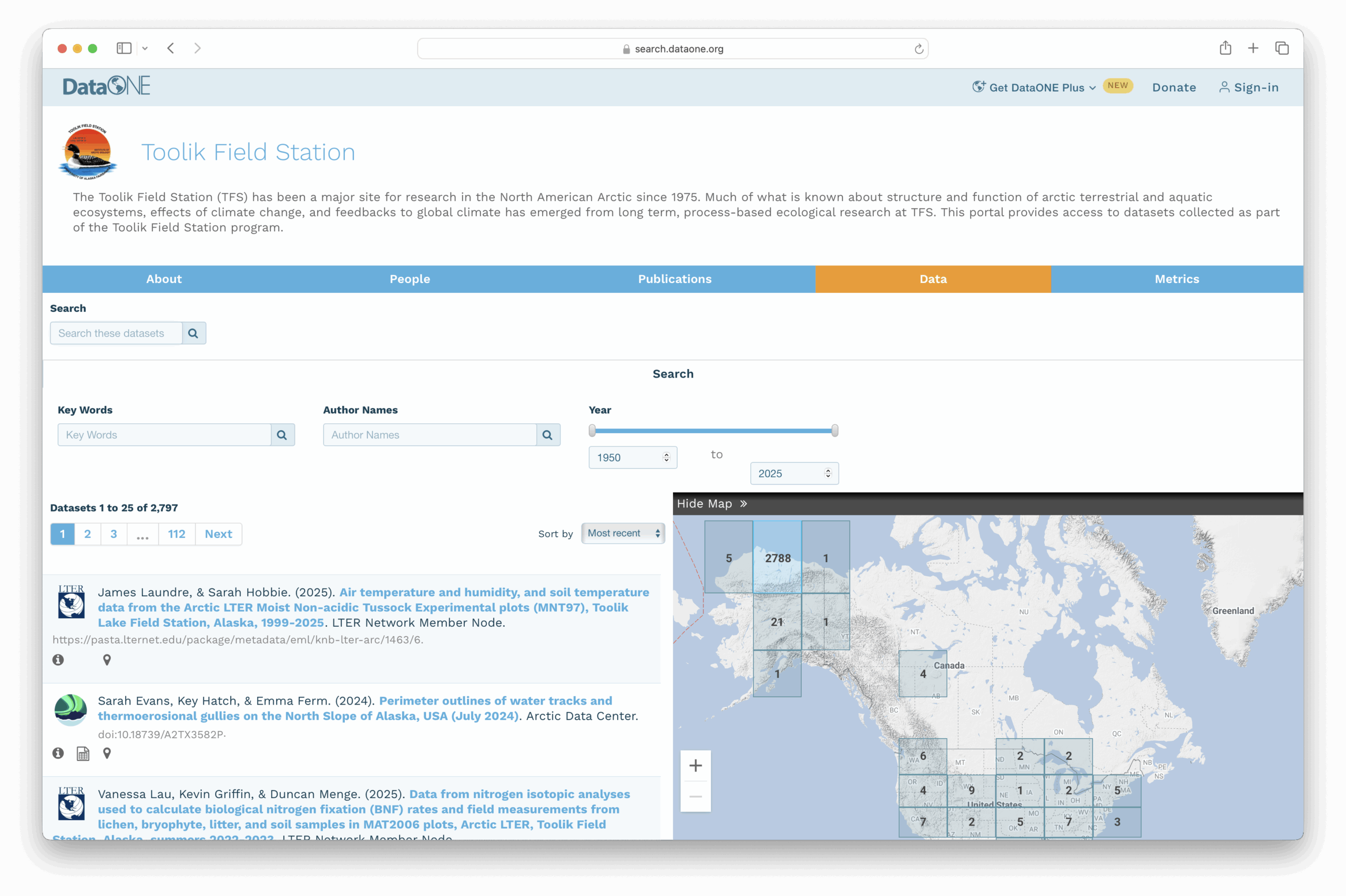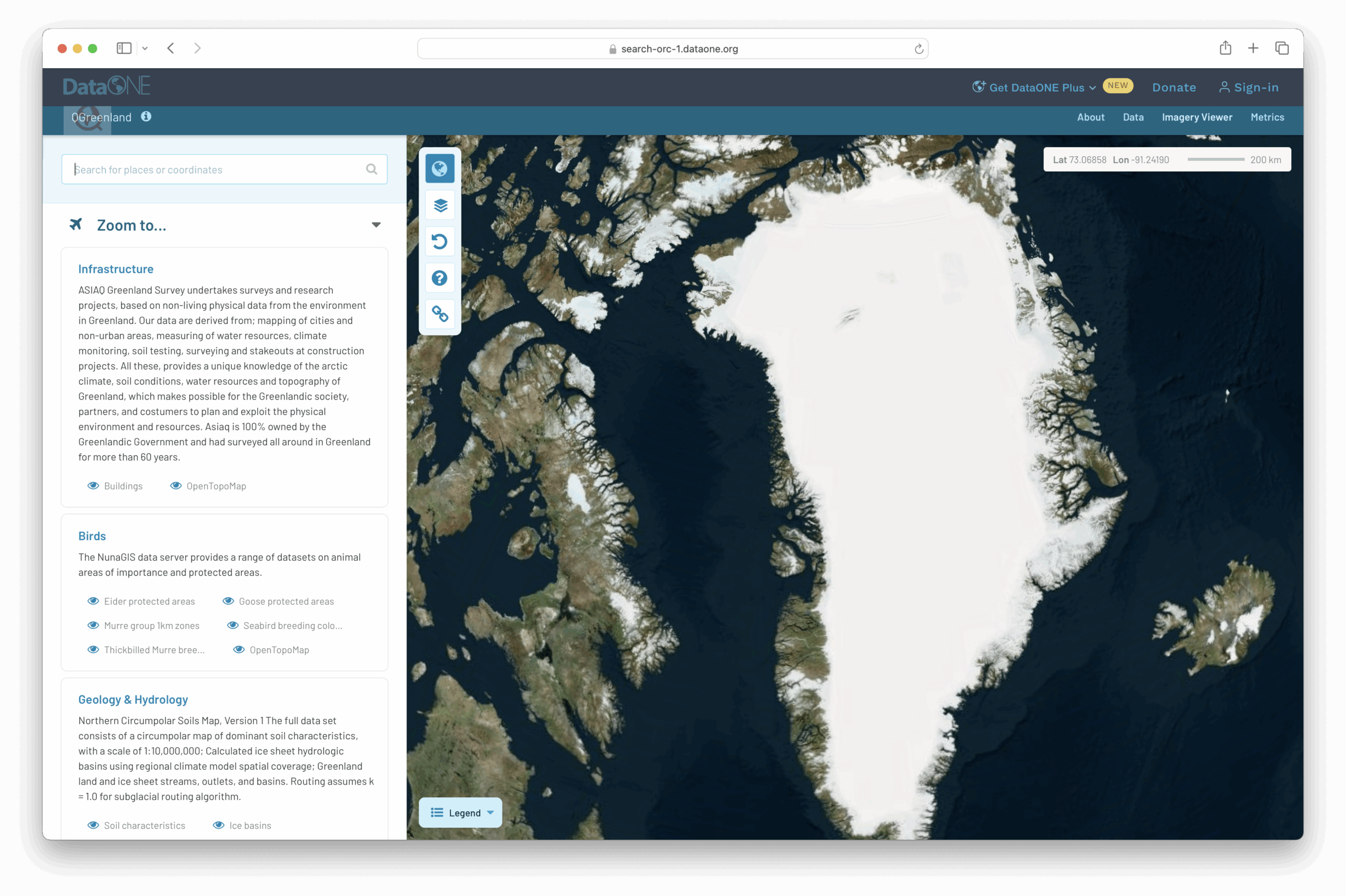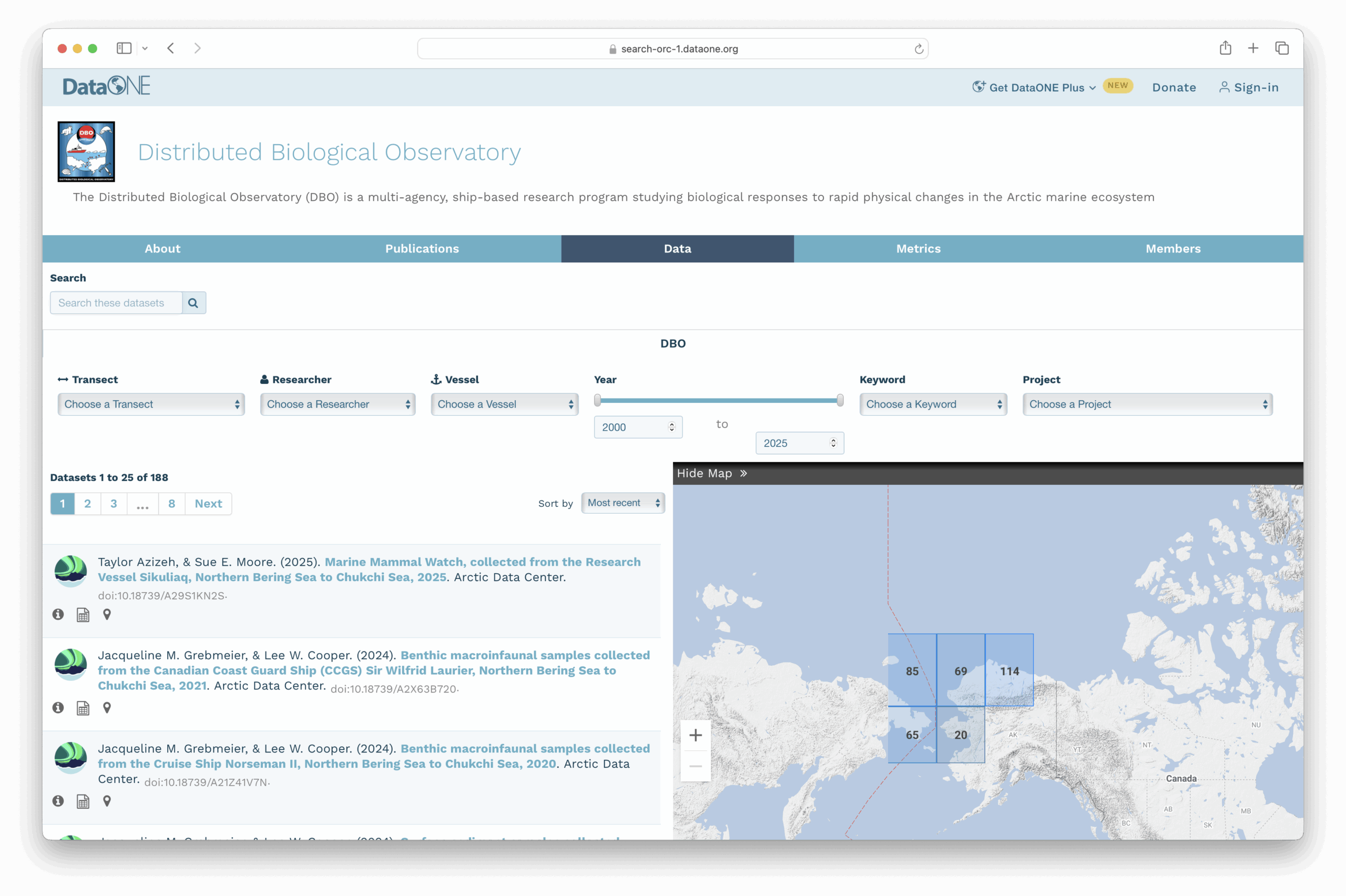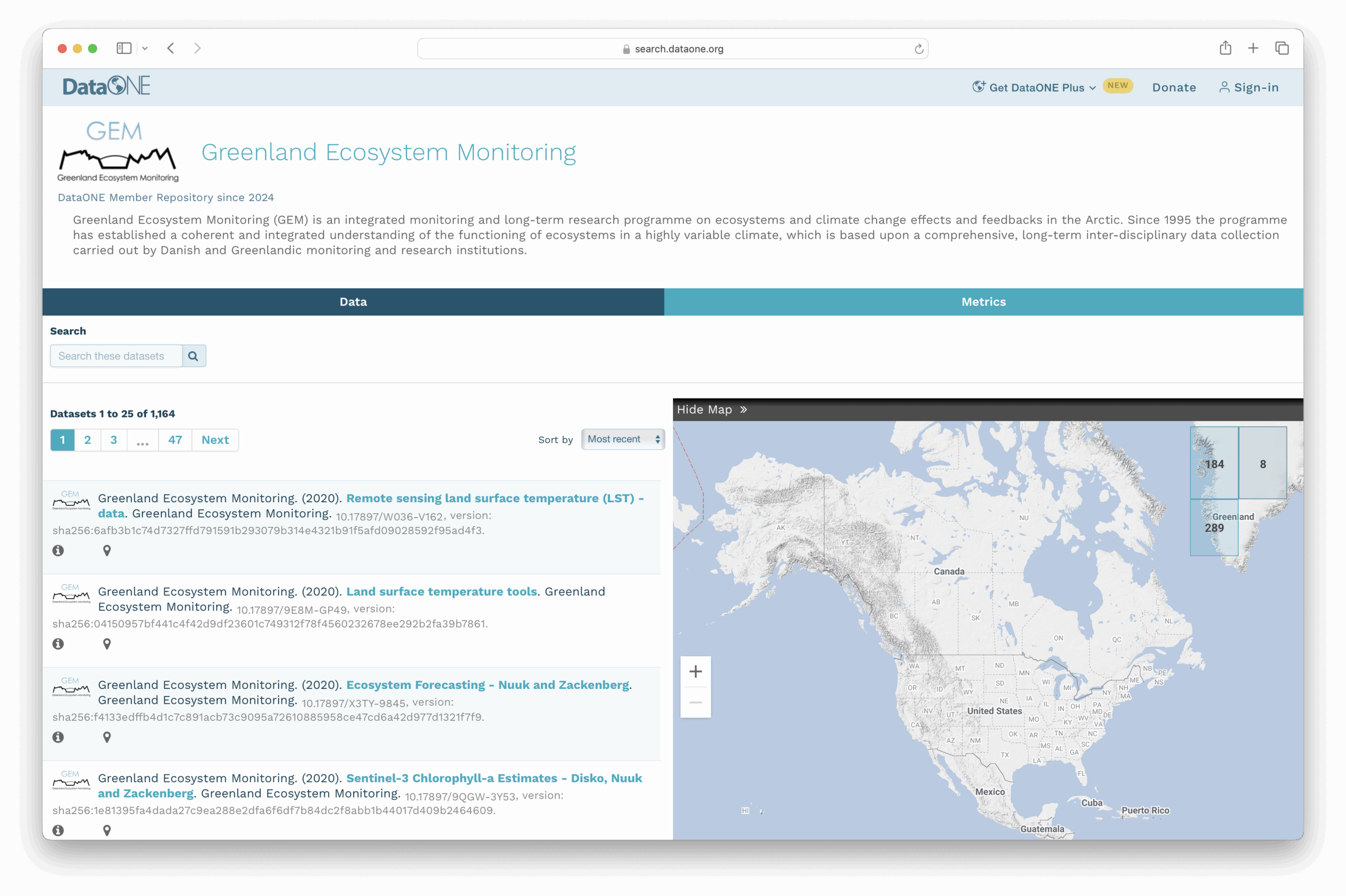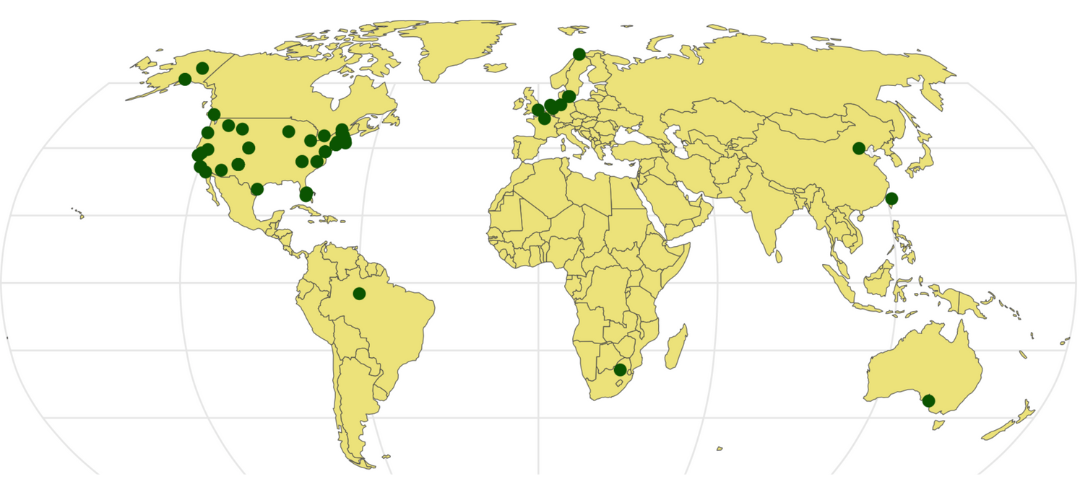
Graphic depicting the various data repositories across the network. Graphic created by Matt Jones.
DataONE is a federation of international data repositories that expand access to Earth and environmental data through enhanced search and discovery tools. By advancing data interoperability, reproducibility, and long-term preservation, DataONE ensures that valuable research remains discoverable well into the future. Its community supports researchers, educators, and the public in exploring and sharing knowledge about our planet and the environment that sustains it.
Historically, DataONE was funded by the National Science Foundation from 2009 to 2019, after which its management transitioned to the National Center for Ecological Analysis and Synthesis (NCEAS) at UC Santa Barbara. Since then, DataONE has continued as a community driven project supported by a sustainability model designed to build community, advance software infrastructure, foster key innovations and diversify funding streams through a fee-for service-model. To learn more about how DataONE can support your research, explore their available services.
Why is DataONE important to the Arctic Data Center?
DataONE connects independent repositories, also known as member nodes, into one searchable network which includes the Arctic Data Center. This means the data in the Arctic Data Center is indexed and discoverable through DataONE’s catalog alongside other data from other repositories, which expands the visibility and accessibility of Arctic data to those who might be unfamiliar with it or those who are working with global data.
Additionally, the Arctic Data Center software infrastructure and standards directly result from those built for DataONE, making all features and new advancements made within the network accessible to the users of this community. Some of these key features available to Arctic Data Center users include:
- Thematic data portals: Curated collections of data meant to showcase the work completed by your lab, research team, field station, or organization
- Customizable, interactive, and shareable map views with web-ready geospatial visualizations: Making spatial data such as LiDAR easier to explore
- File hierarchy support and display: Organize datasets in structures that are easier to access
- FAIR (Findable, Accessible, Interoperable, and Reusable) Metadata Assessment Reports for datasets: Helps ensure data meets FAIR standards
- Comprehensive, standards-based metadata forms: Support consistent data documentation
- Data replication and data preservation: Safeguard datasets for long-term accessibility
- Custom DOIs: Support data citations and linking
Building Community Through Conferences, Community Calls, and Collaborative Software Development
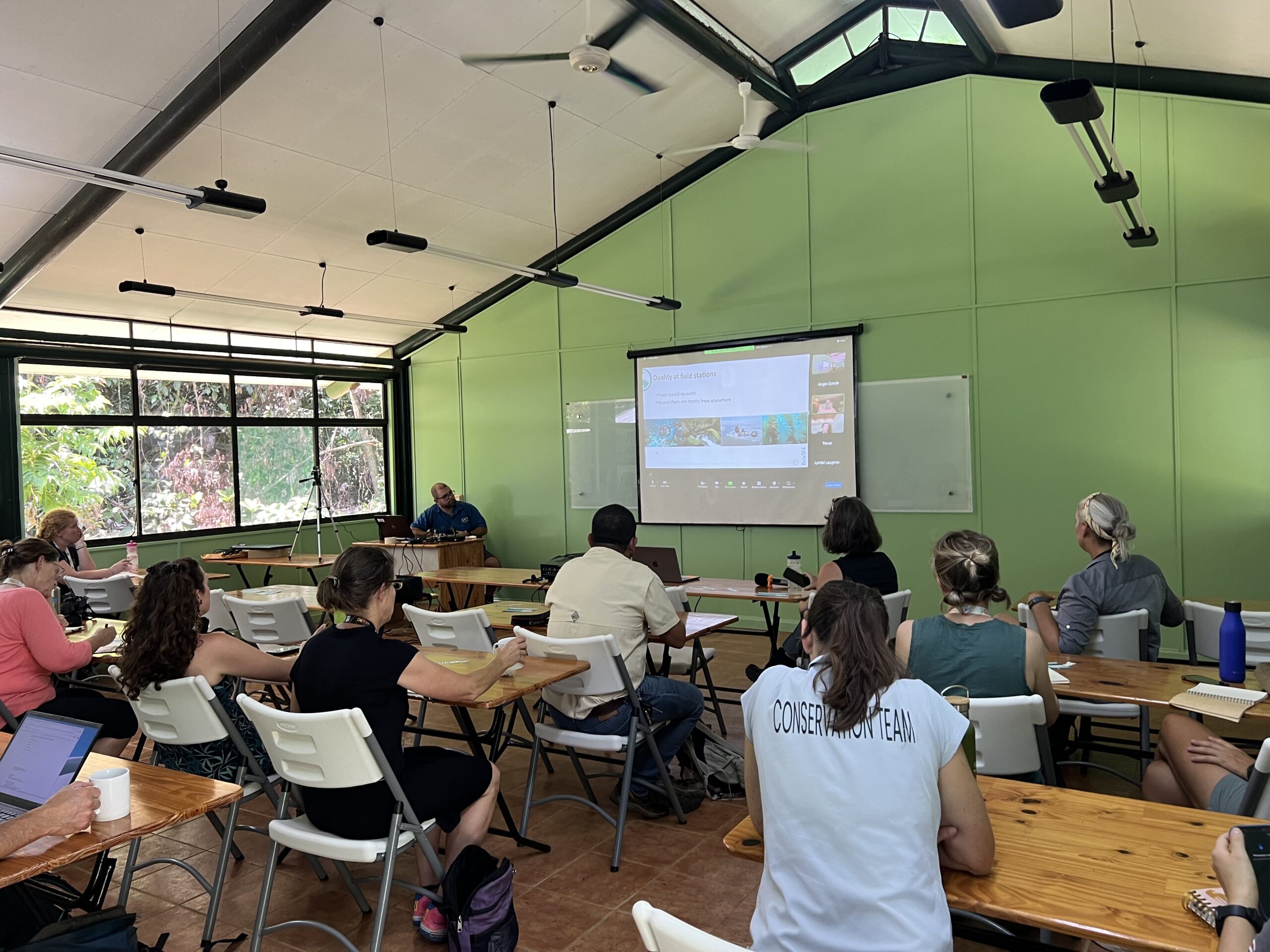
A presentation delivered to field stations about DataONE at the 2023 OBFS Annual Meeting in Costa Rica. Photo Credit: Angie Garcia.
One of the pillars of DataONE’s sustainability model is continuously building community within the network. This is accomplished through their global network that brings together researchers, information managers, librarians, data authors, users, and diverse stakeholders. By connecting these individuals and organizations, DataONE facilitates knowledge exchange, collaboration, and sharing of best practices in data management and open science. Community engagement occurs through various mechanisms such as community calls, in-person meetings at various conferences, and collaborative open source software development projects like Metacat and MetacatUI.
This November, representatives of their team will be in Nuuk, Greenland at Greenland Science Week highlighting advancements from DataONE to connect repositories that support Greenland-based research into the network through the integration of schema.org. Some of these include QGreenland, the Greenland Ecosystem Monitoring (GEM) and Geological Survey of Denmark and Greenland (GEUS) Dataverse. To learn more about their upcoming meetings, join their Slack channel to stay up to date.
Impact of DataONE
DataONE advances open science and scientific collaboration through its mission and has helped projects further expand their impact. Some of these supported projects include the Permafrost Discovery Gateway (PDG), QGreenland, the Distributed Biological Observatory (DBO), State of Alaska Salmon and People (SASAP), and others. By integrating their data into DataONE through a data portal or the data catalog, these partnerships increase data visibility and accessibility, enabling researchers worldwide to discover, reproduce, and build upon available resources. By collaborating across projects, DataONE has amplified their global reach of data and helped the Arctic Data Center’s cyberinfrastructure remain robust and valuable to the Arctic researcher community.
Explore Arctic-Relevant Portals in the DataONE Network
Written by Angie Garcia
Community Engagement and Outreach Coordinator

